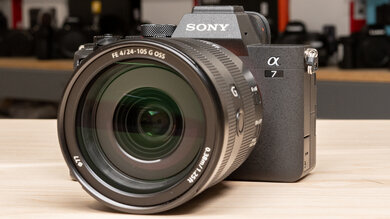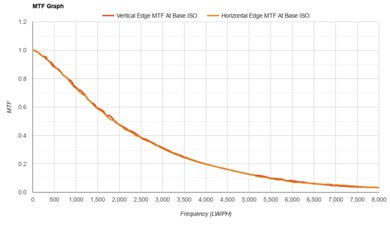
While advanced video features are all the rage on cameras, photography is still the bread and butter of most consumer cameras. Whether you're looking for the perfect camera to document your travel adventures, a model that can capture beautiful landscapes, or a fast camera to keep up with sports and wildlife, there's no shortage of options out there, including many that are well-rounded enough to suit all manner and styles of photography. What's most important is choosing a camera that fits your needs, budget, and ergonomic preferences.
It's worth noting that a camera's overall performance can vary drastically depending on the lens you use. Generally, investing in a less expensive camera body and higher-quality lenses is better than in an expensive camera body and cheap lenses.
We've bought and tested over 90 cameras in our lab, and below, you'll find our recommendations for the best digital cameras for photography. If you're looking for something more specific, you can also check out our recommendations for the best cameras for wildlife photography, the best cameras for landscape photography, or the best cameras for low-light photography.
-
Best Camera For Photography
Travel PhotographyLandscape PhotographySport & Wildlife PhotographyVloggingStudio VideoAction VideoThe Sony α7 IV is the best camera for photography that we've tested. It's a very well-rounded hybrid model that sits just shy of pro territory. With a new, higher-resolution 33 MP sensor over its predecessor—the highly popular Sony α7 III—it captures highly detailed photos with plenty of leeway to crop and make edits. Dynamic range is excellent, and Sony's real-time autofocus continues to set the standard for what AF is capable of.
It isn't a perfect camera by any means. Yes, it has in-body image stabilization (IBIS), but we've seen more impressive stabilization implementations, and if you want to shoot uncompressed RAW files, the camera's max burst rate drops to 6 fps, which is a bit disappointing for high-level sports or wildlife photography. Our previous favorite, the Canon EOS R6 Mark II, has it beat in that respect, with 12 fps burst shooting (or up to 40 fps in electronic shutter mode). However, with the wide selection of glass available for Sony's E-mount, including plenty of third-party lenses at a range of price points, the α7 IV has a notable advantage, especially as Canon keeps its RF mount cloistered from third-party interest.
-
Best Upper Mid-Range Camera For Photography
Travel PhotographyLandscape PhotographySport & Wildlife PhotographyVloggingStudio VideoAction VideoIf the Sony α7 IV is a little out of your price range, the Fujifilm X-T5 is a fantastic choice at a lower price point. With a 40-megapixel APS-C sensor, it's one of the best cameras for photographers interested in landscapes or portraits, giving you plenty of leeway to crop and edit your photos. While it isn't as well-suited to low-light shooting as full-frame alternatives, the detail and image quality you can get out of this camera is hard to beat at this price point.
The camera also honors Fujifilm's photography-oriented roots with vintage-style exposure dials that make it a breeze to adjust your settings on the fly and a three-way tilting screen that's incredibly versatile for waist-level shooting and street photography. It's also quite portable. If you're looking for a more robust camera with better ergonomics for studio work, you might prefer the Fujifilm X-H2. It uses the same sensor as the X-T5 but has a bigger body and some additional benefits for hybrid or video shooters, like a full-sized HDMI port and CFexpress card slot. However, it's a bit pricier and less portable.
-
Best Mid-Range Camera For Photography
Travel PhotographyLandscape PhotographySport & Wildlife PhotographyVloggingStudio VideoAction VideoFujifilm knocked it out of the park with the original Fujifilm X-S10, one of the best-value APS-C cameras around, yet somehow managed to improve the formula with the Fujifilm X-S20. It's pricier, but it's a fantastic mid-range camera for hybrid shooters. With great ergonomics, an excellent tried-and-true sensor, and an updated autofocus system, it can handle all kinds of photo work. Plus, it records video in 4k at up to 60 fps and 6.2k at up to 30 fps, with internal 10-bit recording, making this a very impressive video camera.
If you're an action photographer, an alternative like the Canon EOS R7 will nab you significantly faster shooting speeds and a slightly more intuitive autofocus system overall. However, it's more expensive, and lens options are still fairly limited for Canon's RF-mount, so the X-S20 is the way to go for most shooters.
-
Best Lower Mid-Range Camera For Photography
Travel PhotographyLandscape PhotographySport & Wildlife PhotographyVloggingStudio VideoAction VideoIf the Fujifilm X-S20 is out of your price range, consider an entry-level model like the Nikon Z 50. Like the Fujifilm, it uses an APS-C sensor, so it's less suited to low-light photography than our full-frame picks above. However, it performs admirably in low light for a crop sensor camera and offers plenty for both beginners and more advanced users.
For one thing, it's one of the most well-built and comfortable entry-level cameras we've tested, with a weather-sealed body and generous handgrip. Its large viewfinder gives you a clear view of your subject, and the camera has a highly intuitive user interface that's accessible to newcomers. Battery life isn't amazing, however, so if you'd prefer a longer-lasting battery, the Sony α6400 is better. The Sony also has slightly better autofocus, but the ergonomics and user interface could be better.
-
Best Budget Camera For Photography
Travel PhotographyLandscape PhotographySport & Wildlife PhotographyVloggingStudio VideoAction VideoThe Canon EOS R50 is one of the best bang-for-your-buck cameras on the market. It's a great choice for beginner photographers thanks to its simple and intuitive controls and a variety of auto-shooting modes that allow novice photographers to play around with different photography styles. On top of that, it has a highly accurate and easy-to-use autofocus system, and it's very portable for travel or street photos.
Unlike the Canon EOS M50 Mark II, which it effectively replaces, this is also a good camera to grow with since it uses the same lens mount as full-frame Canons like the Canon EOS R6 Mark II. That means you can use both APS-C and full-frame lenses with the R50, making it easier to upgrade to a full-frame body down the line. The Olympus OM-D E-M10 Mark IV is another great budget option, especially if you want the more portable Micro Four Thirds system. There's a well-established lineup of lenses, as well. That said, its autofocus system is much less reliable than the Canon camera's, and the camera is a bit less suited to low-light shooting because of its smaller sensor.
-
Best Point-And-Shoot Camera For Photography
Travel PhotographyLandscape PhotographySport & Wildlife PhotographyVloggingStudio VideoAction VideoIf you thought high-quality photography was reserved only for large interchangeable lens cameras, think again. The Fujifilm X100V proves that point-and-shoots still have something to offer in the age of smartphone photography. This premium compact camera has the same 26-megapixel APS-C sensor as higher-end models like the Fujifilm X-T4. Its design also hearkens back to vintage rangefinder cameras, with a hybrid electronic/optical viewfinder offset from the body's center. As if that wasn't enough, it has an excellent 35mm full-frame equivalent prime lens, which is versatile enough for different photography styles. It isn't the smallest point-and-shoot but compact enough for travel or street photography.
The Sony RX100 VII is a more portable alternative if you need something smaller. It even has a zoom lens if you prefer to have more flexibility with framing. However, it uses a smaller one-inch sensor, so image quality isn't as good as the Fuji. If you're after portability and image quality, the RICOH GR III is a street photographer's dream and another worthy alternative. However, ensure you're okay with giving up a viewfinder and tilting screen.
Notable Mentions
- Canon EOS 5D Mark IV: The Canon EOS 5D Mark IV is a high-end full-frame DSLR popular among professionals and hobbyists thanks to its impressive image quality and robust weather-sealed construction. However, it's an older model now and lacks features like IBIS and the more reliable AF tracking you get with newer mirrorless cameras like the Sony α7 IV. See our review
- Fujifilm X-S10: The Fujifilm X-S10 is the predecessor to the Fujifilm X-S20. It's notably cheaper and features the same sensor, but it has a less reliable autofocus system and worse video specs. Still, if you don't need features like internal 10-bit recording, the X-S10 may be a better deal. See our review
- Nikon D780: The Nikon D780 is one of the best all-around DSLR cameras we've tested, suitable for various photography styles. Some may prefer its optical viewfinder to the electronic viewfinders on mirrorless models like the Sony α7 IV. However, it isn't the most portable camera and has a slower burst rate than many mirrorless alternatives. See our review
- Sony α7 III: The Sony α7 III is the predecessor to the Sony α7 IV and is still a great photography camera. It's around the same price as the Fujifilm X-T5 and a good alternative if you'd prefer a full-frame sensor. However, its IBIS system isn't as effective, and the camera is less well-rounded for hybrid photo/video work. See our review
Recent Updates
-
Sep 14, 2023: Replaced the Canon EOS R7 with the Fujifilm X-S20 as the 'Best Mid-Range Camera For Photography'.
-
Aug 17, 2023: Replaced the Fujifilm X-H2 with the Fujifilm X-T5 as the 'Best Upper Mid-Range Camera For Photography' and added mention of the Fujifilm X-S20 as a more portable alternative to the Canon EOS R7.
-
Jul 21, 2023: Replaced the Canon EOS R6 Mark II with the Sony a7 IV as the 'Best Camera For Photography'.
-
Jun 23, 2023: Replaced the Olympus OM-D E-M10 Mark IV with the Canon EOS R50 as the 'Best Budget Camera For Photography'. Moved the Sony α7 III to Notable Mentions and replaced it with the Fujifilm X-H2 as the 'Best Upper Mid-Range Camera For Photography'.
All Reviews
Our recommendations above are what we think are currently the best digital photography cameras for most people to buy, according to their needs. We factor in the price, feedback from our visitors, and availability (no cameras that are difficult to find or almost out of stock in the U.S.).
If you would like to choose for yourself, here's the list of all our camera reviews. Be careful not to get caught up in the details. There is no single perfect camera. Personal taste, preference, and shooting habits will matter more in your selection.





























